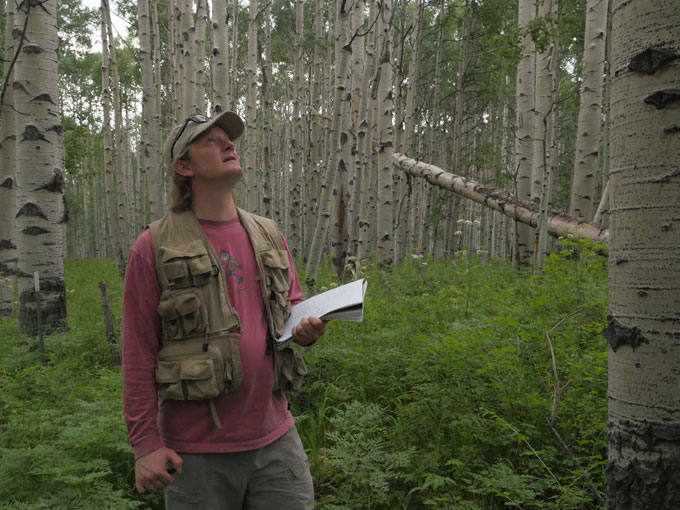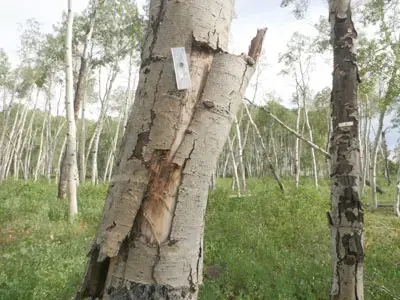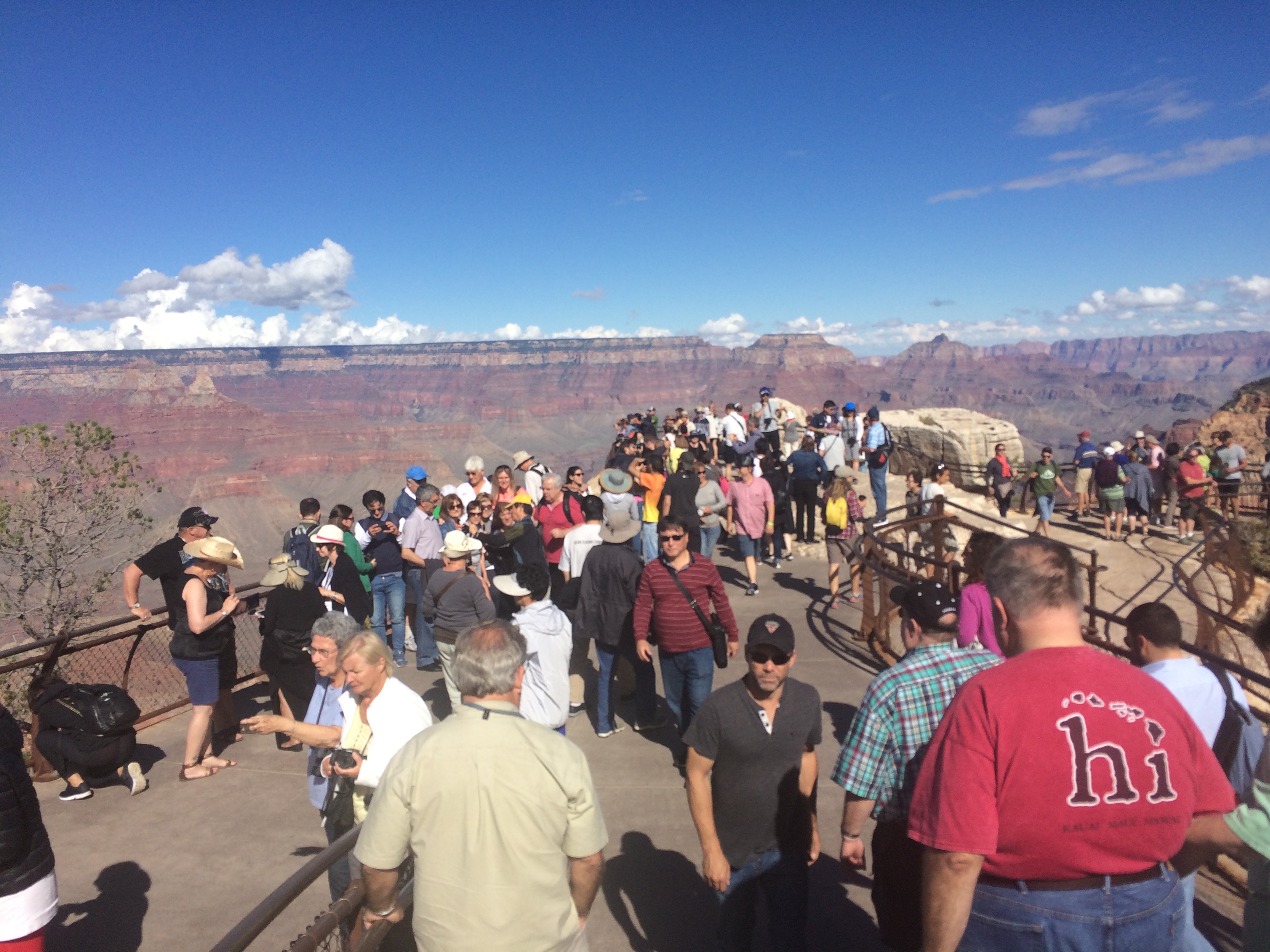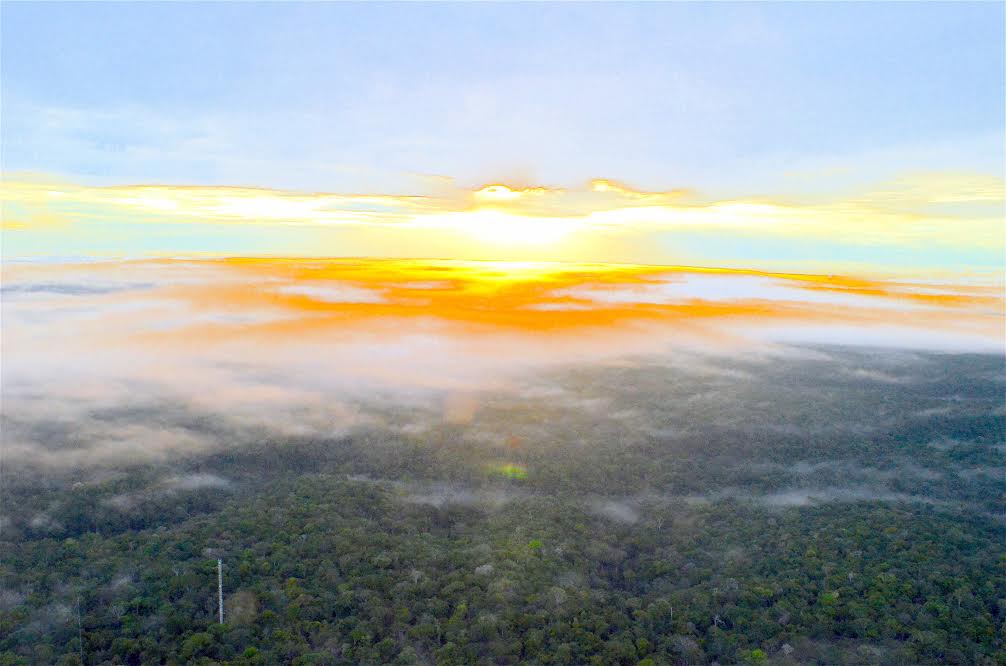
CORTEZ, Colorado – In Colorado’s San Juan National Forest, between 7,000 and 10,000 feet, quaking aspen grow in glorious, shimmering groves. In mid-2004, Forest Service rangers noticed the aspen groves sickening. Trees crowns browned in patchy clusters. Their lime-green, spear-shaped leaves dropped. Aerial surveys observed a rapidly widening area of forest illness and death in the years that followed.
In 2008, William Anderegg drove from California to his parents’ home in Cortez, Colorado, a farming and ranging town south of the National Forest. He also noticed the dying aspens. It was late summer and he’d just graduated from college at Stanford. The compact crowns should have been alight with thick swaying foliage. But on many trees, the branches were bare.
“It was pretty eye-opening to see the forest change so much in my lifetime,” he recalled recently.
Tracking down what killed the trees of one’s youth
William resolved to track down what had killed the trees, where he’d often hunted with his dad. Their hunting ground turned out to offer the first indication of what was becoming possibly the largest loss of aspen ever.
Now a biology professor at the University of Utah, Williams’ research on that tree epidemic has helped shed light on threats to forests across the West, from Mexico to northern Canada. And it suggests that the planet might warm faster than climate scientists have forecast.
In July, I joined William on an expedition to the San Juan National Forest, where he still hunts game with his father. His younger brother Leander, also a biologist studying the ecology of southwestern Colorado’s forests, accompanied us. We drove to some plots William had set up in 2012.
The dawn was clear, but the summer monsoon loomed. By mid-day, thunderheads had piled up against the mountaintops. Dull booms thudded in the distance. Despite the impending storm, we pulled off a rutted road and parked on an embankment, then tramped into a grove of mature aspen, with paper-white trunks like phone poles. The brothers kicked through thick, knee-high undergrowth, searching for a metal stake that marked the site.
To help him identify a new round of aspen death that he’d predicted, William had installed an “early warning network” of 18 forest plots. He’d pounded lengths of pipe into the ground at each site and hammered a numbered aluminum tassel onto every tree within 30 feet of each stake. This was the first visit to any of these locations in two years. He was eager to check how the trees were faring.
Sudden aspen decline, or SAD, as scientists have termed the crown deterioration, spread from southwest Colorado throughout the entire western half of the state. At its peak, in 2008, 300 new square miles of forest succumbed in one year. SAD also took hold in Utah, Minnesota and Arizona, and in the Canadian provinces of Ontario, Alberta and Saskatchewan. The episode of die-offs that had begun in 2004 has since abated. But the sheer scale of the die-off, and concern that it could recur, has researchers monitoring the recovering forest.
The West’s ‘unprecedented drought’ of 2000-2004
Several years after it had begun, scientists settled on an explanation for SAD, partly by the process of elimination. Neither insect infestations nor pathogens appeared to have preceded the outbreaks. Elderly cohorts sometimes age out. But that hadn’t happened either.
Researchers noticed that affected trees often grew in the warmest (and therefore driest) parts of groves, toward aspens’ low-elevation boundary. Aspen died first on drier, south-facing, and least-densely packed slopes, and on the steepest inclines, where rainfall drains quickly. The trees had probably died of thirst. SAD, they concluded, was caused by the unprecedented drought that struck western North America between 2000 and 2004.
Researchers studying tree rings have discovered that the turn-of-the-century drought was western North America’s driest stretch in 800 years. The arid spell had high temperatures, too. This dangerous combination hits forests especially hard. Rain evaporates quickly before soaking into soil and quenching trees’ thirst. Scientists term such incidents warm droughts.
The harmful combination of heat and reduced rainfall has also been called a “global-change-style-drought.” The steady increase of temperature will dry the soil even if rainfall remains unchanged. But, of course, rainfall will not remain unchanged; it’s expected to decline throughout the West.
Nearly a decade of more-benign weather followed the drought. But in 2012, drought struck Colorado again. Again, below-average rainfall coupled with extreme temperatures. Denver and Colorado Springs set heat records. Wildfires blazed across the state, burning through thousands of square miles.
Forecasting which aspen groves likely most vulnerable
William Anderegg, by then a post-doctoral researcher at Princeton, wondered if the new event would cause another episode of SAD, again lagging a few years behind the dry weather. He and Cho-Ying Huang, a remote sensing expert and professor of geography at National Taiwan University, had devised a method of real-time forecasting to illustrate which aspen groves would make it through a drought and which would later decline.
The researchers had noticed that groves suffering SAD from the 2000-2004 drought had displayed observable changes in the amount of the green of leaves and the tan of bark seen in satellite pictures. The orbiting cameras had detected subtle changes hard to see by ground observers. The method had to be tested on a drought in which the researcher didn’t already know where the damage had occurred. The devastating summer of 2012 gave the two scientists a chance to test the satellite technique.
“Wowser!,” exclaimed Leander, craning his neck and inspecting a leafless aspen crown 40 feet up. We’d located the stake designating the middle of plot C-7. The tags of 20 trees in the plot sparkled in the gloomy light.
This “C” plot was one of 12 where William and Huang’s forecast had predicted doom.
Eyeballing the canopy, William studied how much of each tree’s crown was missing its leaves. He called out:
“Tree 10: 100 percent.”
“Tree 12: 40 percent.”
“Tree 18: 100 percent.”
Leander penciled the numbers onto a data sheet.
William recalled having doubted in 2012 that the satellite-based prediction could be right. The trees all had healthy crowns then.
“I couldn’t see these trees dying,” he said. Now the bark of some was sloughing off several trees, revealing lifeless, silvery wood underneath.

Sometimes, it sucks to be proven right
Leander recorded nine completely dead trees and two others seriously moribund, totaling more than half of the individuals that William had tagged. The brothers observed comparably bleak figures at several other C plots. William called the number of sick and dying trees “well above background.” The results suggested that his satellite method had worked, and indicate that a new, previously-unreported, round of SAD might now be underway.
By day’s end the brothers had grown gloomy. “Sometimes, it sucks to be right,” said Leander.
William said that he’d have to run his numbers through painstaking statistical validation before he could be certain. Other experts would check them too, before publication in a scientific journal.
Jim Worrall — a Forest Service tree pathologist and one of the leading SAD experts — says it would be a big surprise if William validates his initial impression that a large percentage of trees are dying. “Normally, we don’t see a mortality event every time there’s a drought,” he said.
Either way, the future for aspen in Colorado and other drought-prone areas is grim. In the long term, much of the aspen’s current habitat will become too hot and too dry. Worrall led a study finding that 50 percent of the aspen’s present range will no longer be suitable by 2060. Some land, at high elevations, will newly become acceptable, but species already there might resist an aspen invasion. In any event, the net effect on aspen will be negative.
One paper in the journal Nature Geoscience warns of “an impending drydown,” of western North America, with far-reaching consequences for the region’s forests. Authors of that article forecast that by 2100, the turn-of the-century-drought “will represent an outlier of extreme wetness.” Forests throughout the region will retreat and probably be replaced by grasslands.
The authors also noted that the West’s woodlands now absorb 200-600 million tons of carbon every year — somewhere between the amount produced by people burning fossil fuel in Canada and India — moderating the rate of climate change. Among other worrisome ramifications of the research, the scientists forecast that this carbon sink could disappear.
Researchers, meanwhile, will continue trying to stay a step ahead of these changes. “As the plot thins,” Leander said, “the plot thickens.”

Education Resource
Meet the Journalist: Ben Mauk
Mining companies and government agencies hoped to build up our nuclear arsenal and, as an...









